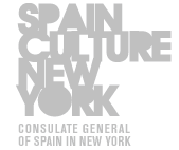
RÓMULO CELDRÁN brings for the first time to the American public a comprehensive solo exhibition of this young Spanish visual artist’s latest drawings and sculptures. The works on display belong to the ZOOM and MACRO series on which Rómulo Celdrán has been working for a number of years. Both series rediscover our world of everyday objects under a fascinating oversized vision.
Under the name of ZOOM, a set of drawings take shape which aim to explore the extensive world of objects that interest Rómulo Celdrán for different reasons, be they aesthetic (or anti-aesthetic), plastic, functional or even emotional. ZOOM, as a series, aims to develop in two-dimensions the concepts that the MACRO series explores in sculpture.
ZOOM and MACRO contemplate the Human Being as an elliptic subject. It is ignored, not through denial but because it is assumed to exist. These works speak of objects and scenarios that are empty of explicit human existence, and at the same time of places that are full of implicit human existence.
ZOOM and MACRO act as camera lenses, graduating the scale of measurements with which we perceive what we look at and breaking down the correspondence between the real size of an objects and the size that we perceive depending on how far away from it we are. They act as a kind of traditional magnifying glass that draws us closer to the object worthy of observation even when we keep an appropriate distance in order to view it.
The concepts of ZOOM and MACRO give the object new dimensions, strengthening its presence and inviting us to explore it, discovering hidden spaces and unnoticed nooks. They place us before a growing world, with the same consequences that we would see as Shrinking Men walking through a reality made up of objects whose unsuitable size renders them functionally useless, existing on a scale that is no longer human.
In the words of Rómulo Celdrán:
“I believe there is something magic in the world of scales. There is a kind of emotional memory that invites us to feel the relationship with the Macro objects as if it were a game.
As children, we view the world on a much larger scale than other people. In order to satisfy that feeling of relationship with the external world, many brands of toys try to create a world on a child’s scale. They manufacture cars, kitchens, tools and other objects to scale for children. That memory of playing, of curiosity, of identification with what we apprehended remains somehow fixed in our memory.
Discovery, surprise and, of course, irony, are aspects that I would like to see hovering around this series of works. Reality does not exist. And if what exists is the perception that we have of it, why not explore the underlying principles of that perception?”
Opening day: Thursday, February 27, 6 to 8 p.m.